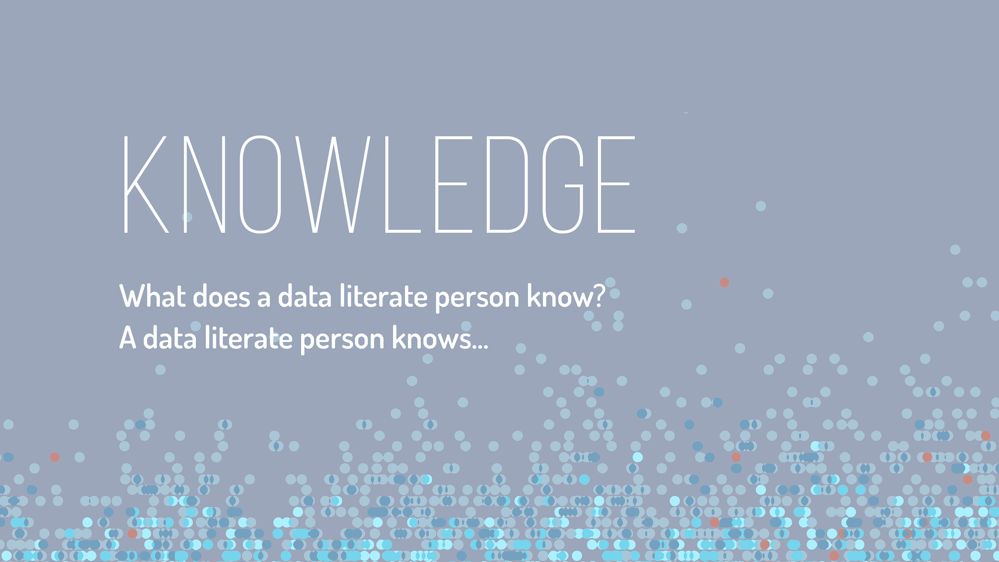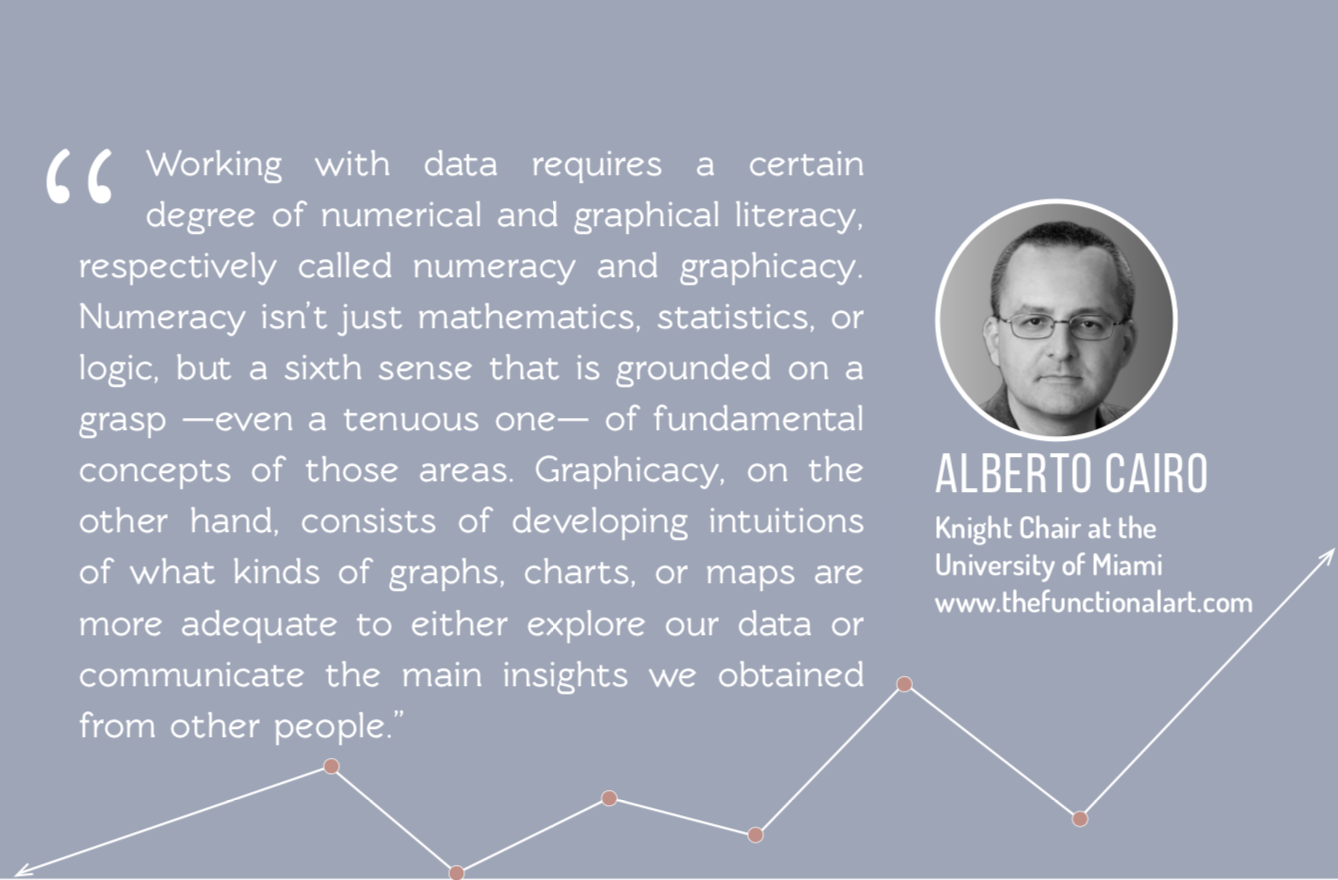Part 1 – Knowledge
The Knowledge Category
Our knowledge is the body of facts and information with which we are aware or familiar. It’s the first category of data literacy traits enumerated because our development starts with the knowledge that we obtain either through academic study or through practical experience.
What does a data literate person know? A data literate person knows, among other concepts…
- Basic Elements of Data
- Data Storage Methods
- Data Analysis Principles
- Data Visualization Rules of Thumb
Knowledge Category Quote
The following quote was provided to us for the Knowledge category of the ’17 Key Traits of Data Literacy ebook’ by Alberto Cairo, Knight Chair at the University of Miami and author of “How Charts Lie” (2019) and “The Truthful Art” (2016). Note Alberto’s emphasis on the intuitive and tentative nature of the knowledge we can acquire about data:

